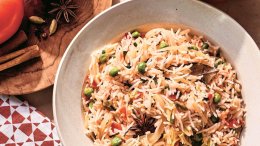While most Canadians would likely agree that embracing sustainable agricultural practices will be integral to the future of food production in Canada, figuring out how to get there can often appear daunting.
Luckily, the blueprint has long since been laid out. Before (and during) the era of industrialized food production, Canadian farmers relied on sustainable farming practices to ensure both the local population and the farmers themselves could continue to thrive.
One such practice that continues to be prevalent today is the process of rotational grazing. In a rotational grazing system, animals move from pasture to pasture, feeding off the nutrients of one subdivided area while other areas regenerate and regrow.
In addition to preventing soil erosion and agriculture runoff, the cyclical nature of rotational grazing helps to boost soil biomass and fertility, while sequestering the total carbon emitted into the atmosphere.
If the aforementioned benefits weren’t enough to convince you to support local farmers who employ sustainable agricultural practices, perhaps the following quote from Saskatoon food writer Jenn Sharp will persuade you: “Eating local, real food, is almost always the most nutritious, delicious, and environmentally friendly choice.”












